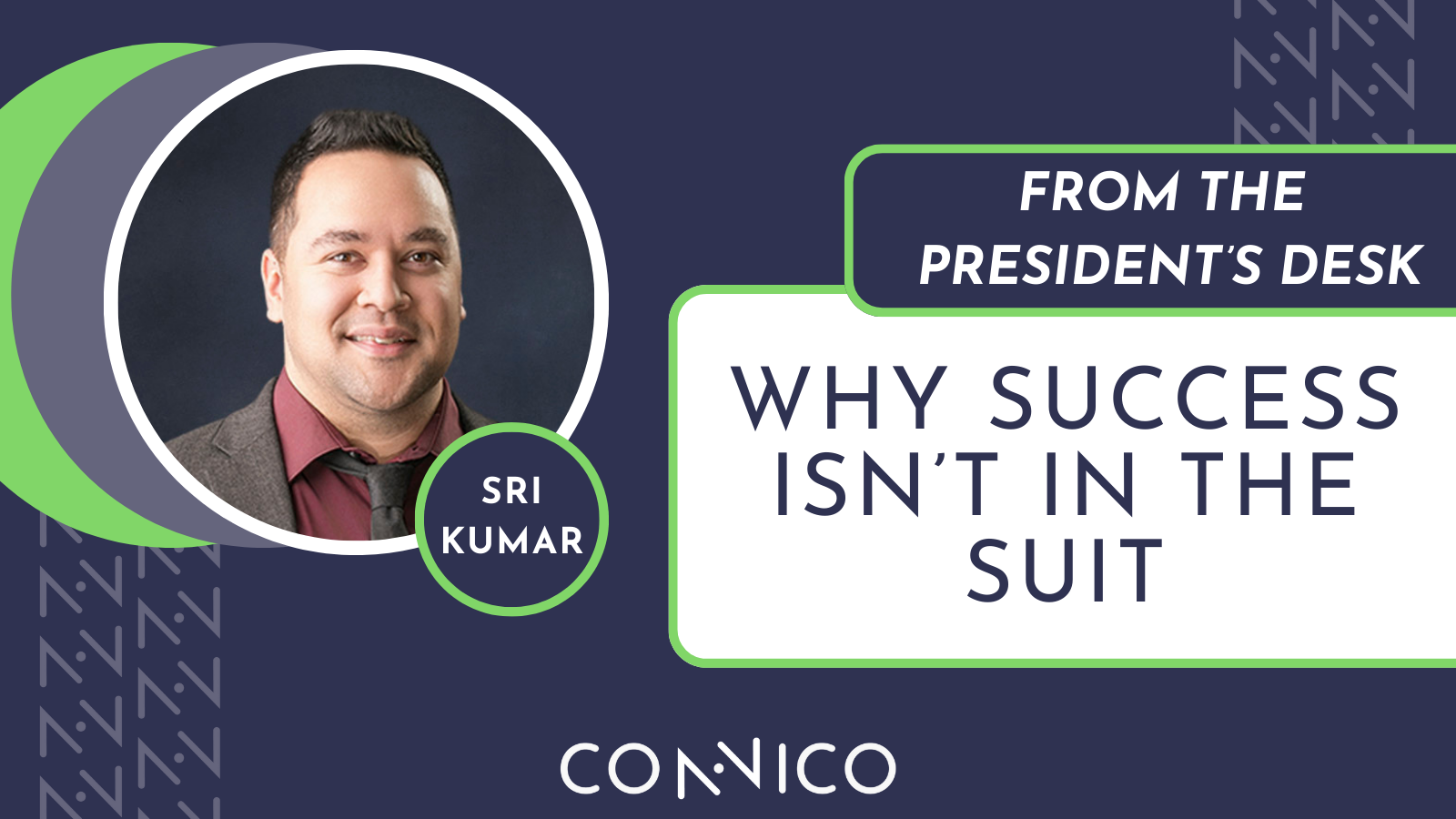From the President’s Desk: Why success isn’t in the suit

Early in my career, I'll never forget the looks I got when I walked into a construction meeting wearing muddy jeans and work boots. The suits in the room exchanged glances, afraid that I might get dirt on their ties! But those work boots brought more value into the room than any tie. They showed that I was someone deeply involved in the project, solving problems, and willing to get my hands dirty — literally. Those boots were a sign of success, even if they didn’t shine like dress shoes.
Too often, “dress for success" translates to “dress professionally.” Some take it a step further, encouraging us to “dress for the job you want, not the job you have.” In other words, ditch the SpongeBob tee and swap it for a collared shirt and loafers by tomorrow morning.
For decades, particularly in Western business culture, “dressing for success” has meant pleated pants and shiny shoes (regardless of role, gender, or ambition). This rigid mentality has been shaped largely by traditions of the past. For many growing up in that era, dressing the part symbolized social status and the ability to provide for their families.
Then came 2020, and with it, a pandemic that flipped the script. The shift to remote work challenged the traditional definition of success. Suddenly, what we’ve known for years at Connico became clear on a global scale: someone working in a onesie and fuzzy slippers could be just as productive, and deliver the same quality of work, as someone in designer loafers and a button-up.
So, what does this mean for the ambitious professional in 2025?
Andy Smith, Construction Law Partner at Lewis Brisbois and one of my close colleagues, believes the answer lies in redefining how we view “successful” attire. “Instead of dressing for success, why not dress as if you’re already successful?” says Smith, who juggles a thriving legal career while managing dozens of properties across the Midwest.
He points to a wry observation about the dress code in the millionaire-studded world of real estate investing: Most people dress like they’re unemployed! Smith himself typically sports a “PRODUCT OF PUBLIC SCHOOLS” t-shirt, gray joggers, and untied sneakers. “This is the uniform of success in my business — the freedom to wear what you want. I don’t dress for success; I dress as success.”
At Connico, we’ve built a culture where success isn’t defined by what you wear; it’s defined by what you accomplish. For 11 years, as an owner’s representative during construction, I showed up to meetings dressed for the jobsite. My outfit didn’t match the corporate look, but it represented something far more valuable: commitment, expertise, and readiness to solve problems on the ground. Those meetings weren’t about appearances; they were about delivering results. (Now, off the jobsite, I was usually in plaid shorts stitched with cartoon grasshoppers and a V-neck tee, so you can imagine what kind of results I was after in my personal life!)
Our company encourages employees to embrace a workplace style that works for them. While professionalism is non-negotiable and anything that interferes with our high standards of productivity and quality isn’t allowed, we don’t impose arbitrary dress codes. You won’t find ties in our offices or policies mandating khakis over jeans. However, that won’t stop you from finding a team doing their best work every moment of every day.
If you were to drop by one of our locations or join a Teams call, you’d see folks who are ready to work hard in Connico-branded button-downs, polos, or sweaters. You’ll find people grouped around plan tables with their sleeves literally rolled up, sharing ideas openly because they feel comfortable with who they are and what they stand for. It’s this comfort and flexibility that drives them to run out to project sites at a moment’s notice and deliver incredible results. It’s a wonderful environment to be part of!
I really don’t care what you’re wearing — I care about if you’re succeeding. What matters is how you show up for your work, your team, and yourself.
P.S. If you need hard data on the pitfalls of overly strict dress codes, consider this extreme case: UPS shelled out $5 million over dress-code-related discrimination allegations before its current, forward-thinking CEO, Carol Tome, took the reins in 2020. Read the story here.



